
Naught moves but clouds, and in the glassy lake
Their doubles and the shadow of my boat.
The boat itself stirs only when I break
The drowse of heat and solitude afloat
To prove if what I see be bird or mote,
Or learn if yet the shore woods be awake.
Long hours since dawn grew, - spread, - and passed on high
And deep below, - I have watched the cool reeds hung
Over images more cool in imaged sky:
Nothing there was worth thinking of so long;
All that the ring-dove says, far leaves among,
Brims my mind with content thus still to lie.
Edward Thomas had written The Glory early in May, 1915, a paean to an early May morning, almost certainly written on the day or shortly after (see The Glory post). This perfect May day, spoilt by his inability to embrace it properly, seems to have prompted him to look back on a day in his memory, unmarred by such doubt. His next poem, July, written on 7th May recalled a perfect July day spent in a boat on a lake. However, in contrast to The Glory which concludes “I cannot bite the day to the core”, July ends with his mind brimming…”with content thus still to lie.”

As Edna Longley has pointed out, Edward Thomas seems in July "to “know” and consummate his “desire” achieving a rare “content”. Images of water and birds now fill his horizon and the temporary abdication of responsibility is complete. The poem’s languorous movement rounds out a pervasive sense of suspended life”.
He had conjured up a perfect day out of his memory.
While The Glory reflected his mood at the time he wrote the poem, in July the poet was able to idealise a memory from long ago. In fact the day is actually drawn from a specific note jotted down at the back of one of his earlier field note books. It reads somewhat cryptically:
“L’ Apres Midi d’un faune”
Oxshott July - white clouds? - solitude - pines - amorous gloom - heat - pool & deep reeds”
The note is undated and appears on the last page of a field notebook dated November 1908 to February 1909 (FNB26). It would seem likely that this note was added subsequently either later that year in July 1909 or the following year 1910, five or six years before the poem. The brief entry contains enough of the key words of the poem to suggest that this was the day he was remembering - white clouds, solitude, heat, pool, deep reeds.
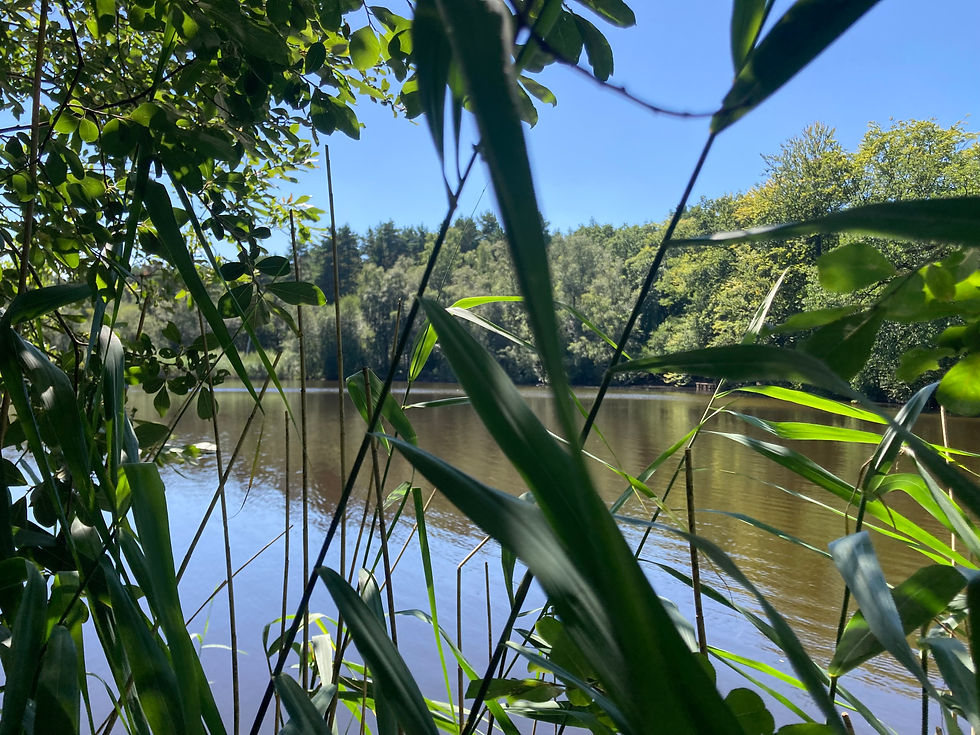
But the note's “amorous gloom” was unstated in the poem. Linked to the title above, “L’ Apres Midi d’un Faune”, it is evident that ET was originally associating that July day with the very different atmosphere of the Stephan Mallarme poem of that name. ET would have known the poem in the French and had written in his literary biography of Maurice Maeterlinck, the French playwright, that Maeterlinck had praised Mallarme as one the two greatest French mystics of the day. (He had also written a literary biography of Algernon Swinburne, who was regarded as the most French of all Victorian poets and whose work had been praised by Mallarme.)
Mallarme had written his best known poem in the 1860s and its fame and notoriety, had been given a further boost by Debussy’s composition of the ballet “La Prelude de l’apres midi d’un faune”, based on the poem's first section. The poem has been a landmark of Symbolist poetry, mystically describing a classical scene in a marsh in Sicily, where a faun with his reed pipes, woke in the afternoon from a dream to remember the nymphs and his pursuit of them and their sensuous charms that morning. In his monologue the faun begins and concludes wondering whether the nymphs and his desire for them were illusions. Like other symbolist poems it sought for an ideal and explored subjectivity and memory - a theme which ET also explored in his poetry.
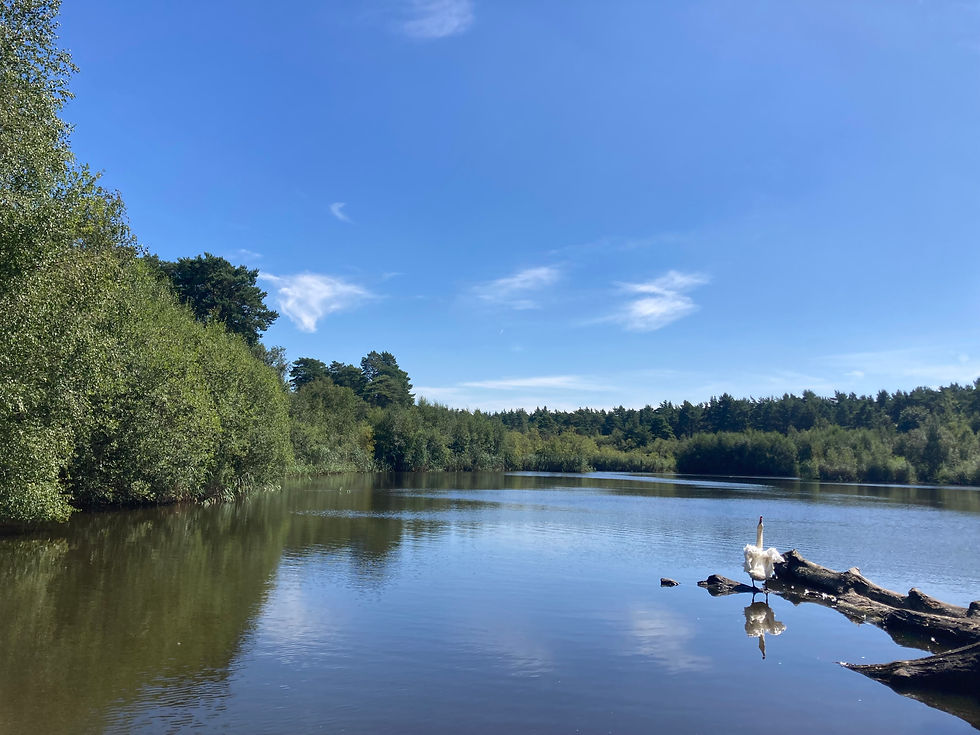
Yet the amorous longing that pervaded the French poem was absent in July. Instead ET conveyed an atmosphere of languid torpor, of lazy contentment, without the desire. Was entering this almost zen-like state his response to not being able “to bite the day to the core” of his previous poem, The Glory? This calm, serene state in July was similar to that found in Bright Clouds, written a year later, when he had decided to pursue a course that would ultimately take him to fight, and die, in France - see Bright Clouds post.
The sexual longing was absent in July, the poem, but was very much in evidence in one of ET’s prose pieces or short stories, also entitled July, published in Light and Twilight in 1911, four years before the poem. He sent the piece to Gordon Bottomley at the end of August 1910, describing it as “one of those crude mixtures of experience & invention which prove me no artist.”
The experience he was drawing on was his and Helen’s own sexual awakening which occurred by a pool and in a copse on a remote part of Wimbledon Common on Helen’s twentieth birthday in July 1897. It was described by Helen in some detail in As It Was. For July, the short story, this was transposed to a different landscape - a wide pool in woods, “half in shade and half burnished by the sun, surrounded by tall reeds and reflecting the reeds, the branches of the forest, the clouds….” This landscape seems, as in the poem, to have been the pool at Oxshott of his notebook, although as he told Bottomley, there was also much of pure invention in the piece.
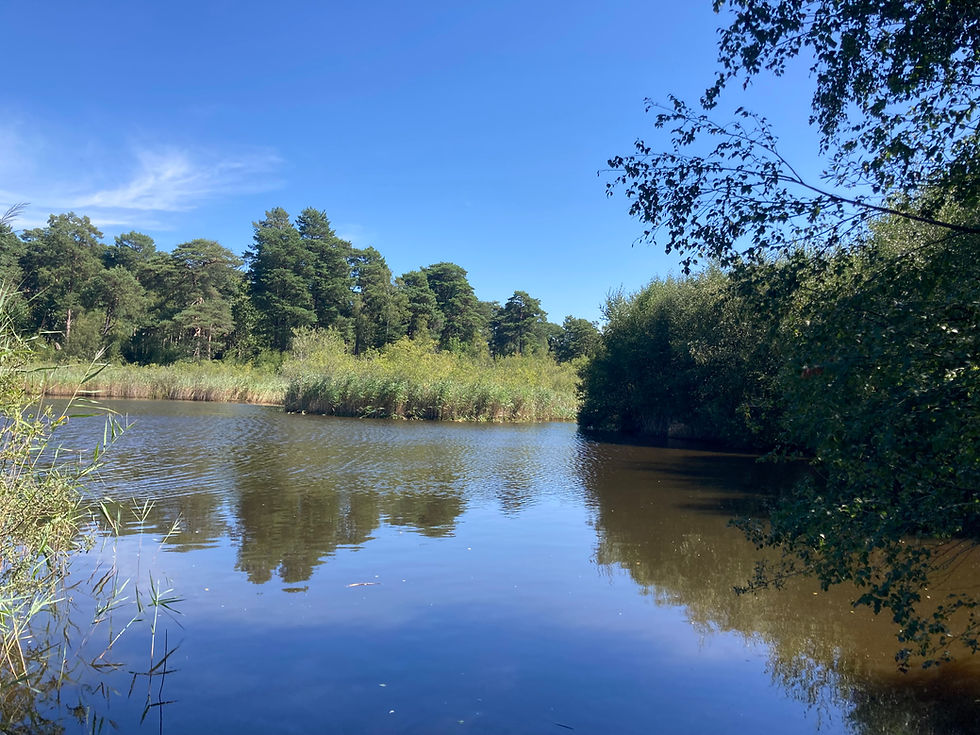
The lovers drink, bathe their hands, sit upon a boulder and dip their feet into the water.
“Girdled in that dense summer murmur, inaudible to the full brain or fancy… The forest came right up to them and stretched its roots out into the water at their feet; but on either side and in front of them the mossy-footed beeches had drawn back a little way from the mirror - leaving, however, their images - down to which there was a slope of turf….”
In July, the short story, the lovers were dallying on the shore; in July the poem the poet was idling in a boat. It is not clear from the original note whether Thomas was on shore or water but he added a note at the bottom with question marks on either end “?seen from which point of view?”. This may refer to the different points of view of the Faun and the nymphs, but it seems more likely, given the two pieces he developed later from the notes, that he was literally meaning which point of view he should take of the scene - from the shore or from the boat.

So where is this pond that loomed into ET’s memory when searching for his perfect day?
Oxshott is a parish in Surrey, east of Cobham and south of Esher. Oxshott Heath to its west extended to and merged with Esher Common and Fairmile Common in a nearly continuous woodland of pines mixed with some deciduous trees, and in between heathland of heather and gorse. Nowadays housing has eaten into this wilderness and major roads cut across the commons. Within Oxshott parish, close to its north eastern boundary with Esher, lies Black Pond. It was a pond surrounded by pines and embedded in reeds - and still is. In Edwardian times it was a well known beauty spot and postcards were produced of the pond and surrounding woodland, which located Black Pond as near Oxshott.
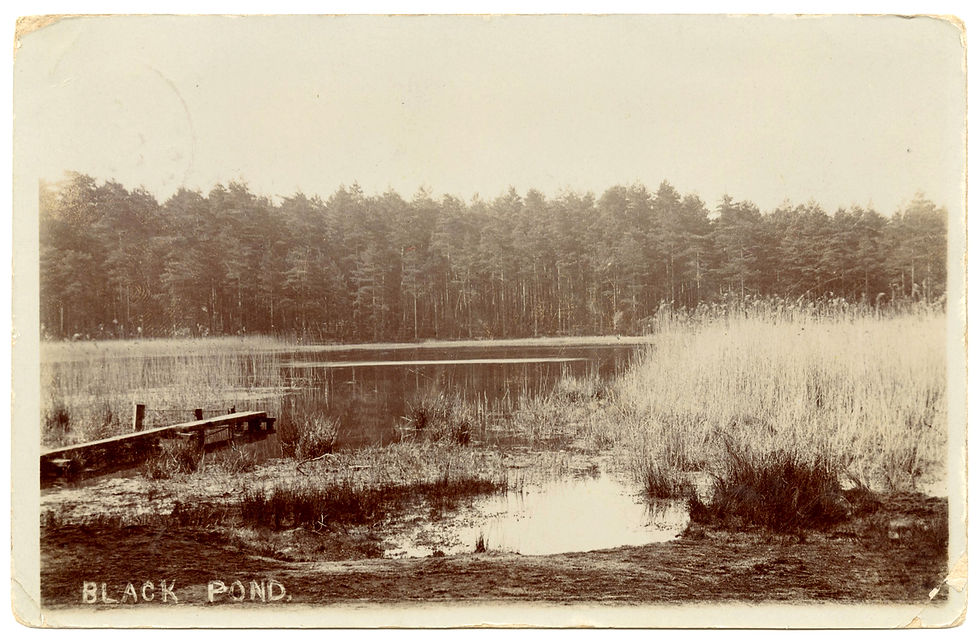
(Reproduction by permission of Surrey History Centre; copyright of Surrey History Centre)
Black Pond is under a mile away from Claremont, one of Queen Victoria’s stately homes in Surrey, and the pond was used to supply water to the estate gardens originally. It also had a fishing house and jetty.
There are other ponds in the vicinity - Middle Pond, Claremont Lake and Spring Pond but none of these have the dimensions or the surroundings to match ET’s description in notebook or poem.
ET himself was a keen oarsman and fisherman so it would seem likely that he was spending a day boating on Black Pond rather than sitting on its banks. In August 1916, writing to Frost he had asserted “There is nothing like the solitude of a solitary lake in early morning, when one is in deep still water.” He had rowed from student days and had recounted in Horae Solitariae, one of his earliest publications, how he had sculled miles up the river Evenlode when at Oxford. He had always loved fishing from childhood holidays in Wiltshire. A friend remembered him being so obsessed as an adult that he sat for hours on a river bank with a boy, both fishing in water where there was no possibility of any fish.
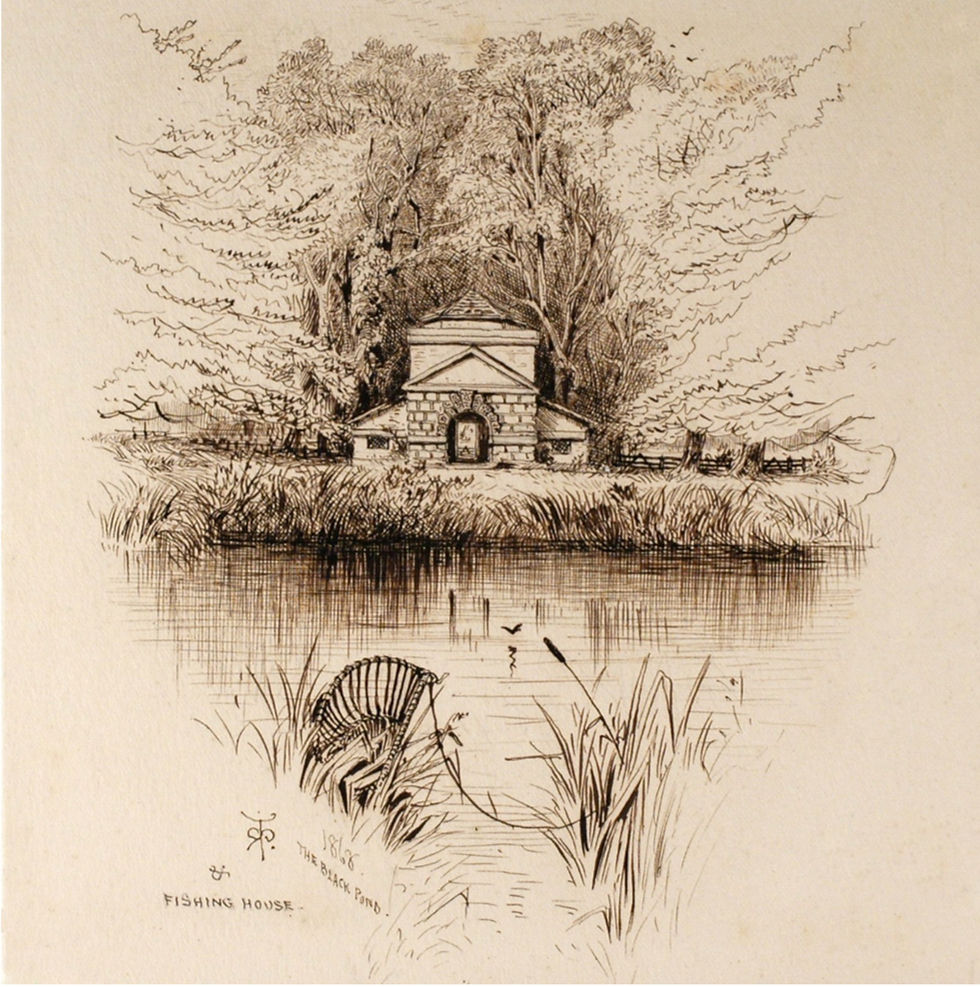
("The Black Pond & Fishing House" by Robert Taylor Pritchett 1868 - copyright Elmbridge Museum)
That said in the poem, July ET seems to be completely passive - just enjoying "the drowse of heat and solitude afloat". The position of the original note in the field note books suggests, as discussed above, that this was either in July 1909 or July 1910. It was probably the later date as this would have been about the time he drafted the short story, July, and his visit would have been fresh in his memory. The date in 1910 also seems more likely because that year he visited a close friend who lived in Great Bookham, a few miles south of Black Pond.
Ralph Hodgson was a poet and cartoonist who had become a friend of ET and they saw a lot of each other in London as part of a literary set who met regularly in St George's Cafe, off St Martin's Lane. Hodgson professed not to be a literary man and did not enjoy talking about literary matters. Thomas wrote to Bottomley “you would like him, such a vigorous and simple nature, careless, generous”. Walter de la Mare, another member of the group, described Hodgson as being as “independent as the North Pole.”
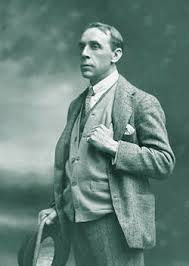
Hodgson used to come to stay with the Thomases at Steep and in return ET went to stay with him at Bookham. Helen recalled him when he died in the 1960s: “We all loved him. He looked - in those days - like one of the prize-fighters he loved to talk about. He was the most indolent man I have ever met, he used to sit in our living room, with his feet on the mantelpiece, smoking a pipe of shag which he kept in an enormous indiarubber pouch….When his money ran out he would draw a picture for a magazine but otherwise talk and playing with the children, who adored him, were his only activity.”
ET was later to fall out with him at the beginning of the war in a spectacular argument about patriotism, but not before Hodgson had facilitated an introduction for Robert Frost to Thomas. In 1910 they were becoming good friends and it seems probable that ET was staying with him when visiting Black Pond, a few miles walk or bike ride away. Perhaps the indolent Hodgson joined ET to laze in the boat - but it seems unlikely given ET’s emphasis on the solitude and Hodgson’s reluctance to walk. Maybe something of his host’s indolence informed the spirit of the later poem!
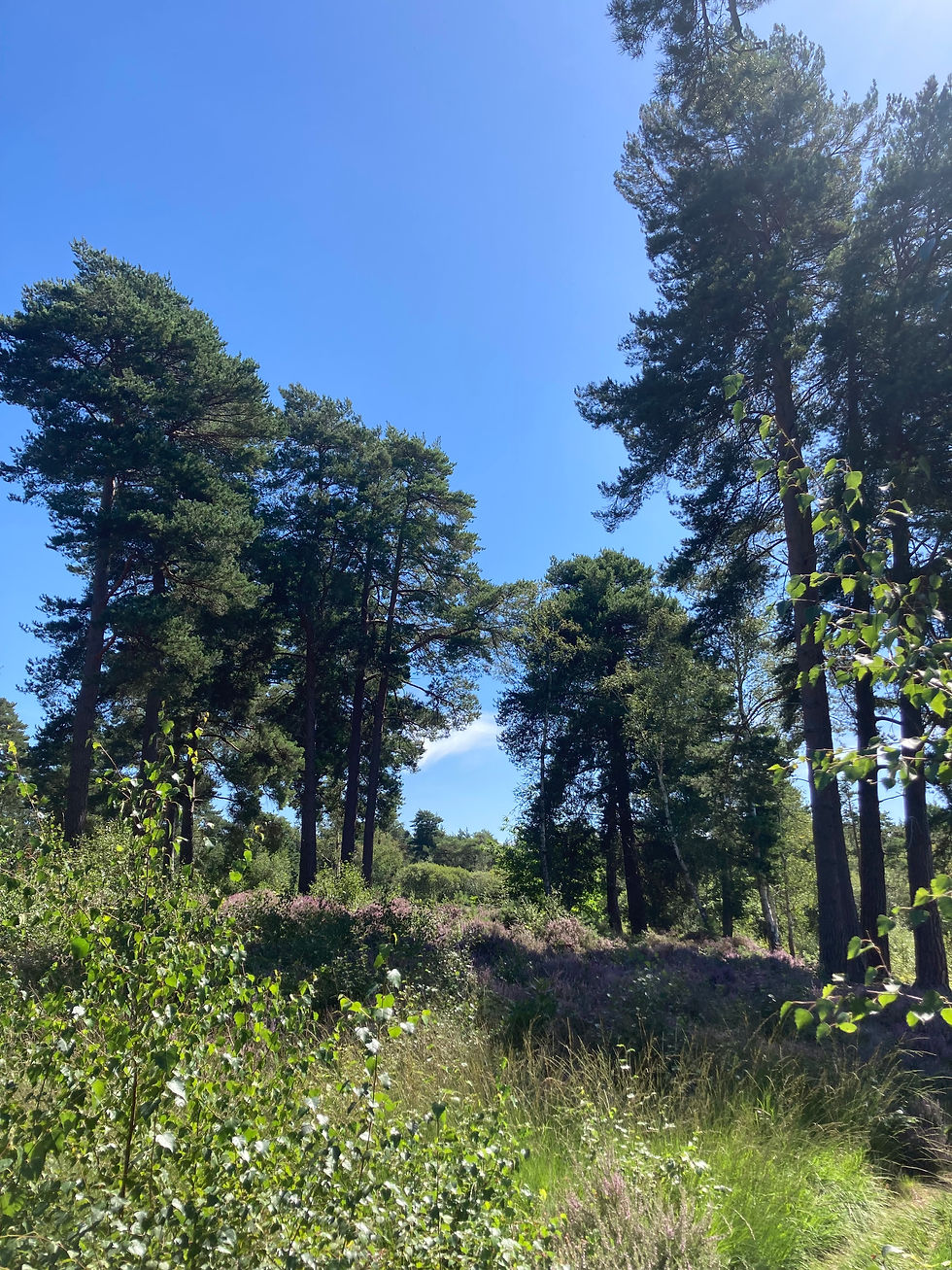
ET occasionally travelled by these commons on his way to and from London. He may have glimpsed the pond from afar again in 1913 when he sat in “a Scots fir root - one like an octopus in sand - on crest of ridge crossing road between Esher & Cobham” (to his right). Ahead the view was of “a near wooded low ridge (1 m) w 3 Lombardy poplars clear of it & a distant lough (lake), one of pale blue grey under pale white-clouded sky.”
The original note about Oxshott pond and the Mallarme poem had an arrow above pointing to, and linking with, another note on the opposite page.
“Out of streets into great old woods. Given source of our happiness depending intrinsically on unhappiness, the past, death etc the trees being corpses, the sea sound being groans of centuries.”
Some of this imagery entered the short story, July. written shortly after these notes. At its conclusion the amorous dallying on a perfect summer day dissipated into a winter scene and the funeral of one of the lovers, a step further into disillusion than Mallarme took in his poem.
For ET happiness was almost always conditional - on a changing mood, his self-consciousness, depression and, as expressed in this note (and a few of his poems), with the underlying consciousness that present beauty or happiness is transient and rooted in past misery. In the later poem, July, the poet has overcome all of these inhibitors to happiness, at least in his memory:
"Nothing there was worth thinking of so long;
All that the ring-doves say, far leaves among,
Brims my mind with content thus still to lie.'
With this mindset he was able to celebrate a day he could embrace more completely and bite to the core.
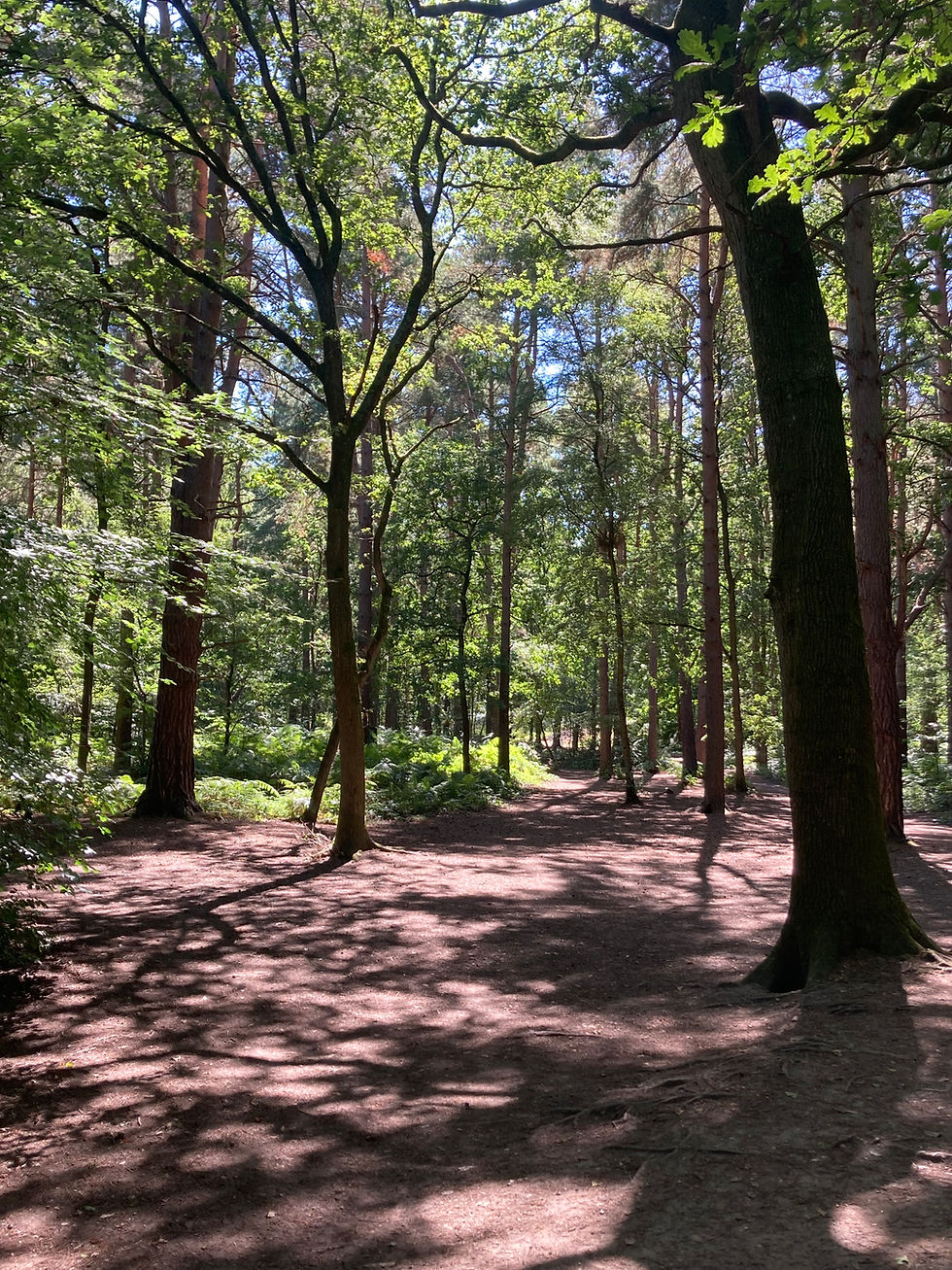
A walk
Black Pond is still well worth a visit with its immediate surrounds much as they would have been in Edward Thomas's day. Like him one can spend time enjoying the views of sky and water, and its reflections, and the birds, reeds, pines and other trees from its banks. Sadly boating and fishing are no longer possible.
There’s a short walk to the pond through the woods and heathland of Esher Common from the Horseshoe Clump car park on the road between Esher and Cobham - the road by which ET sat in the Scots pine roots in 1913. Crossing the road you follow the path to the south of the Blackhills estate, to Black Pond. There are also paths from Oxshott across Oxshott Heath crossing the A3 on a footbridge to reach Black Pond. There are also extensive woods to the east of Black Pond, which can be explored either from Horseshoe Clump car park or from Copsem Lane car park, on the other (eastern) side.
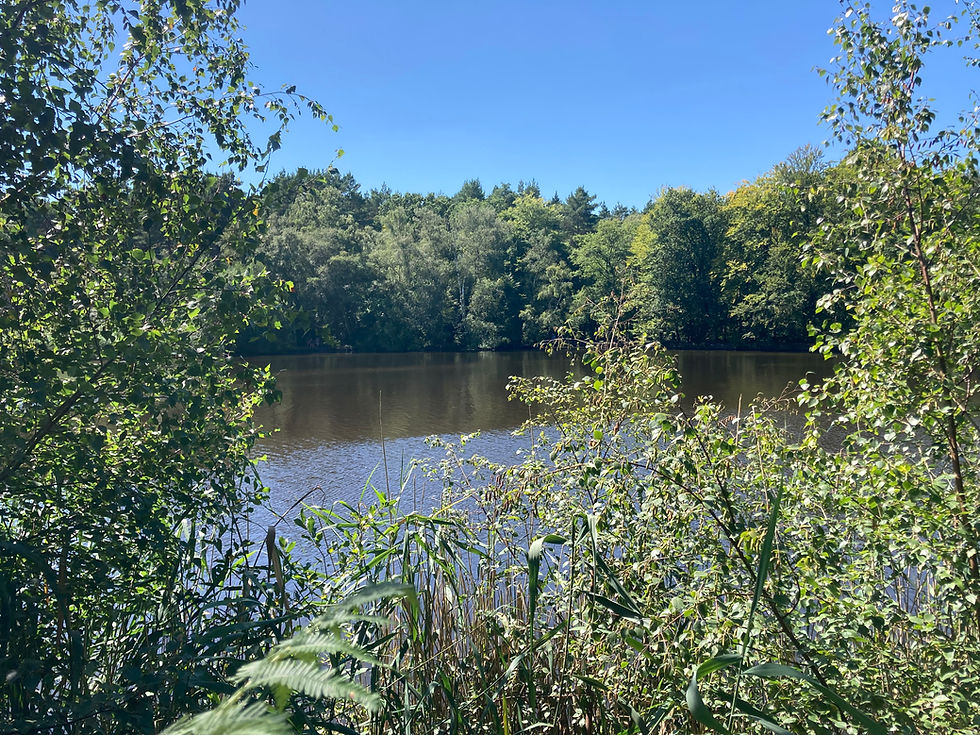
It is not clear from his notes how ET reached Black Pond but he knew these heaths and neighbouring villages like Cobham well from previous visits - and it is only four miles cross-country from Great Bookham where he stayed with Hodgson.
On a couple of previous occasions his travels through this countryside had inspired him to lyrical heights in his notebook. In August 1908 he wrote “Nearing Esher the mist about the elms is thick & all is heavy soft & grey & there is (to me) the joy as if the world were to sink in sleep slowly for ever & give me rest - as if it were inhaling these downy grey fumes - so too the houses & villages dim amg the trees & the ploughmen & cows.”
On Christmas Eve that year, returning to Steep from London on the train, he noted “nr Cobham after sunset, still & cold - the level nearer landscape is clear & dark & commonplace, & it ends in 1/2 a mile w an oak wood; but 12 miles beyond are the Guildford hills, pale blue, soft & airy like a butterfly wing - as of another world than that in which I am travelling.”
Perhaps the experience of travelling alone between his two familiar worlds of London and his home in Hampshire - while the pressing of normal life is temporarily suspended - allowed him to achieve a rare transcendence and contentedness, which he finally expressed in July.
More can be found on walks and exploring the Esher Commons in this link:
Acknowledgements
Edward Thomas field note books copyright Henry W. and Albert A. Berg Collection, New York.
Please note transcriptions of many Edward Thomas's field note books (including FNB 26) can be seen at the Edward Study Centre in the Petersfield Museum.
Edward Thomas's July was published in his book of short stories, Light and Twilight, published in 1911.
I have quoted from and drawn gratefully on Edna Longley's Edward Thomas Annotated Collected Poems and Jean Moorcroft Wilson's Edward Thomas: from Adlestrop to Arras. I have also drawn on Edward Thomas's letters to Gordon Bottomley and to Robert Frost
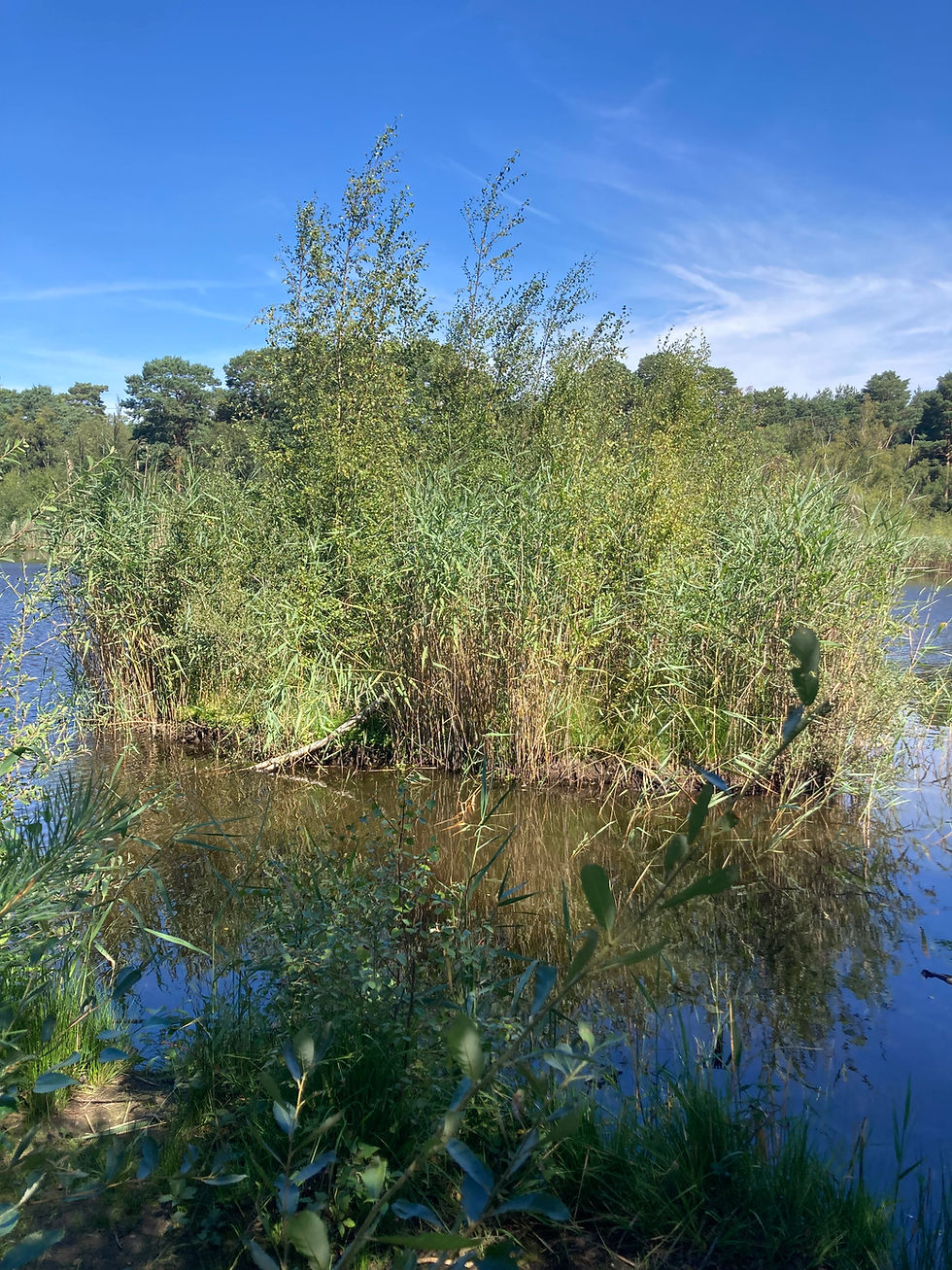
Comments